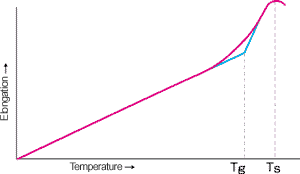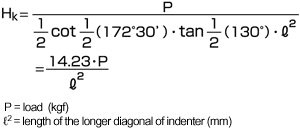 |
- Color Specification
- CIE Equivalents have been obtained in conformance with the Japanese Industrial Standard JIS Z 8701, ″Specification of Colors According to the CIE 1931 Standard Colorimetric System and the CIE 1964 Supplementary Standard Colorimetric System″, and JIS Z 8722, ″Methods of Measurement for Color of Reflecting or Transmitting Objects″. On this home page, the values x and y for standard illuminants A have been used. Please ask our sales department for other values such as Y for illuminants A, Y, x and y for illuminants C and D65.
- Thickness
- The transmittance of a colored glass varies with its thickness.
The change in transmittance according to the change in thickness can be calculated with the transmittance simulation software we provide.
The transmittance specifications of each glass product are the transmittance specification values of each glass product at its standard thickness.
- Refractive index (n)
- The refractive indices listed is given for standard spectral lines of d line (587.6nm). Please ask our sales depart-ment for other glass data.
- Chemical properties
- Dimming and staining sometimes may be observed on the glass surface in the polishing or coating process or during storage. The resistibility of glasses to these surface phenomena is expressed in terms of water durability, for dimming, and acid durability, for staining.
- Dimming
- Polished glass exposed to high humidity or temperature variation may sweat. Water vapor may condense to form droplets on the glass surface. Some of the glass components that dissolve in the droplets may in turn attack the glass surface and react with gaseous elements in the air such as CO2. Reaction products form as white spots or a cloudy film as the glass surface dries. This phenomenon is called dimming.
The difficulty degree of white tarnish occurring is evaluated with the power method water resistance* (DW).
- Staining
- The surface of a polished optical glass product is damaged by water or acid, and the reflected light of interference colors can sometimes be observed on the surface. This phenomenon is called staining.
Water or acid contact causes a chemical reaction, which is ion exchange between cations in the glass and hydronium ions in water, resulting in a silica-rich surface layer that causes an interference color at the layer.
The difficulty degree of blue tarnish occurring is evaluated with the power method acid resistance* (DA).
- DW ( Water durability )
- Glass is powdered and sieved to select particle sizes of 420 ∼ 590μm. The powdered glass, weighed by its specific gravity, is placed in a platinum net basket and soaked in 80 ml pure water (pH 6.5 ∼ 7.5), which is contained in a fused silica flask. The glass is then boiled for 60 minutes and classified according to the percentage of weight loss.
| Class |
1 |
2 |
3 |
4 |
5 |
6 |
| Weight loss ( wt% ) |
≤ 0.04 |
0.05 ∼ 0.09 |
0.10 ∼ 0.24 |
0.25 ∼ 0.59 |
0.60 ∼ 1.09 |
≥ 1.10 |
|
- DA ( Acid durability )
- Glass is powdered and sieved to select particle sizes of 420 ∼ 590μm. The powdered glass, weighed by its specific gravity, is placed in a platinum net basket and soaked in 80 ml 0.01 N nitric acid solution, which is contained in a fused silica flask. The glass is then boiled for 60 minutes and classified according to the percentage of weight loss.
| Class |
1 |
2 |
3 |
4 |
5 |
6 |
| Weight loss ( wt% ) |
≤ 0.19 |
0.20 ∼ 0.34 |
0.35 ∼ 0.64 |
0.65 ∼ 1.19 |
1.20 ∼ 2.19 |
≥ 2.20 |
|
- Thermal properties
- The thermal properties of color filter glass are important for annealing and thermal processing. Three thermal properties are given, namely, transformation temperature (Tg), sag temperature (Ts), and mean coefficient of liner thermal expansion (α). They are determined from a thermal expansion curve obtained from a well annealed specimen heated at a rate of 4℃/min (or at 2℃/min when the temperature is between -30℃ and +70℃). A differential thermal dilatometer is used for the measurement as it maintains a uniform temperature distribution within ±1℃.
- Tg ( Transformation temperature )
- As illustrated in the figure, the transformation temperature is determined by the intersection point of the two tangents of the high and low temperature ranges of the thermal expansion curve.
In this website, temperatures are displayed in steps of 5 degrees.
- Ts ( Sag temperature )
- As illustrated in the figure, the sag temperature is defined as the temperature at which the thermal expansion curve starts to yield.
In this website, temperatures are displayed in steps of 5 degrees.

- α ( coefficient of linear thermal expansion )
- Mean coefficients of linear thermal expansion are measured over both the temperature ranges of -30℃ to +70℃ and +100℃ to +300℃, and are expressed in -7 deg-1 units.
A mean coefficient of linear thermal expansion is defined by the formula as follows:
α = ΔL / ( L × ΔT )
Where L is the object length (mm) at the initial temperature, ΔL is the expanded length (mm) of the object, and ΔT is the change in temperature (K).
- Mechanical properties
- The Knoop hardness and abrasion are shown as mechanical properties required at cold working.
- Hk ( Knoop hardness )
- The value is calculated by the following formula after indenting surface ground glass with a diamond quadrangular pyramid indenters having their angle between opposite edges of 172°30′ and 130° with a load of 0.1 kg for 15 seconds.
In this website, the values are displayed in steps of 10.

- FA ( Abrasion factor )
- Abrasion factor is a relative measure for lapping. A glass sample with a surface area of 9cm2 is placed 80mm from the center of a cast iron circular plate. The plate is then rotated horizontally at 60 r.p.m., and a 1kgf lapping weight is vertically loaded on the sample. Lapping is continued for 5 minutes, with a continuous supply of a lapping compound composed of 10g aluminum oxide (gain size 20μm) in 20ml of water. The weight loss of the sample is then measured and compared to the standard reference material (BSC7) specified by the Japanese Optical Glass Industrial Standard. The abrasion factor is determined with the following formula.

In this website, the values are displayed in steps of 10.
- Specific gravity (S)
- Specific gravity of glass is defined relative to the density of pure water at 4℃.
| Note : |
The listed data are standard value. Because of continuous product improvement, the various data listed are subject to change without notice. |
|